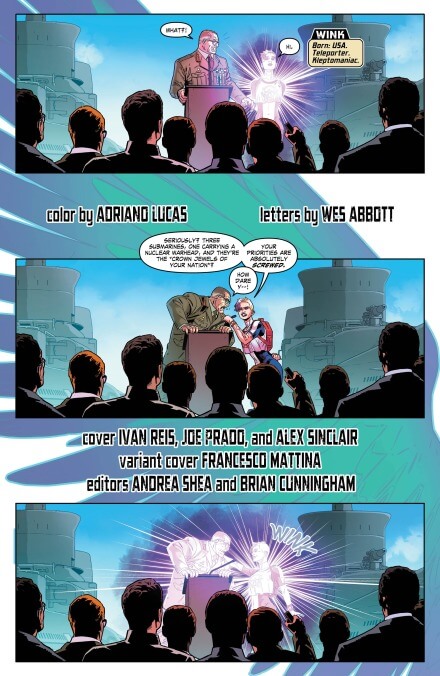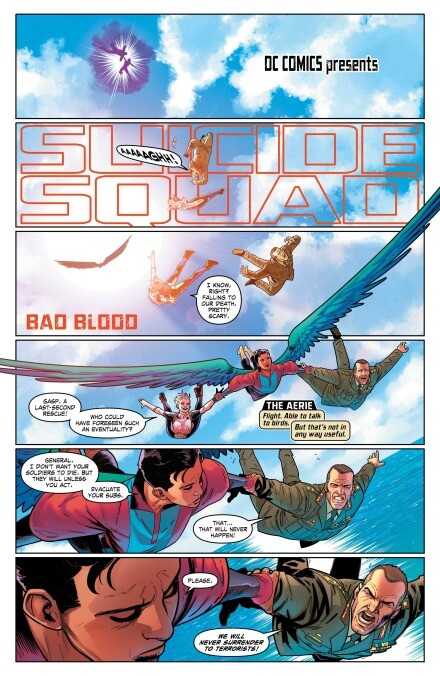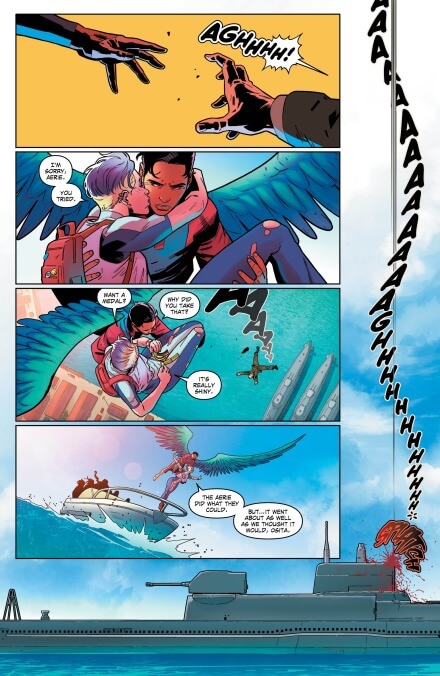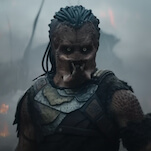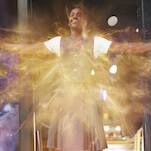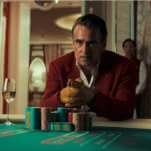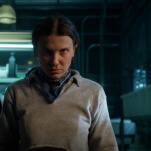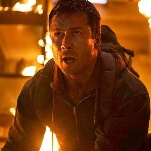The Revolutionaries are at the core of this relaunch, a team of new characters from around the world who get conscripted into Task Force X. Suicide Squad #1 (DC) begins by showing The Revolutionaries in action as they take out a fleet of nuclear subs in Australia, kicking off the story with exhilarating energy as it establishes the team’s formidability. They’ve got skills, but not enough to escape the wrath of Task Force X’s new leader, Lok, who is even more of a hard-ass than former taskmaster Amanda Waller. Lok amplifies the fundamental tension of the series, and the level of animosity is through the roof by the end of the issue, as this white American man takes control of a team of people from marginalized communities in order to shape the world as he sees fit.
From the start, it’s clear this creative team has strong chemistry and a solid point of view for the book’s tone and visual aesthetic. The presentation of the credits and title are especially evocative: Credits are broken up into three sections and printed between panels, with the background featuring a silhouette of a Revolutionaries member. The title appears within a panel showing a military general falling from hundreds of feet in the air, tying the name of the book to the violence that only intensifies over the course of the issue. Wes Abbott uses letters to enrich the storytelling, and the messy end of the general’s fall hits hard, thanks to how Abbott depicts the general’s scream and the sound of his body hitting the submarine.
What made the Injustice comics so engaging was a sense of humor that balanced all of the bloodshed to maintain an element of fun. Taylor understands the value of showing moments of affection and camaraderie, which he uses to contrast The Revolutionaries and Task Force X. The members of the former function like a family, and the kindness they show each other casts them in a more heroic light despite their terrorist actions. The visuals inform those personal connections; a moment of tenderness between Aerie and Wink is rendered with a romantic palette of pink and purple by colorist Adriano Lucas, lulling readers into a false sense of security before Task Force X arrives to take out The Revolutionaries. The action that follows moves quickly, as the series racks up a hefty body count and builds to a cliffhanger that assembles an extremely dysfunctional team—one that will doubtless continue to be whittled away in the future.
